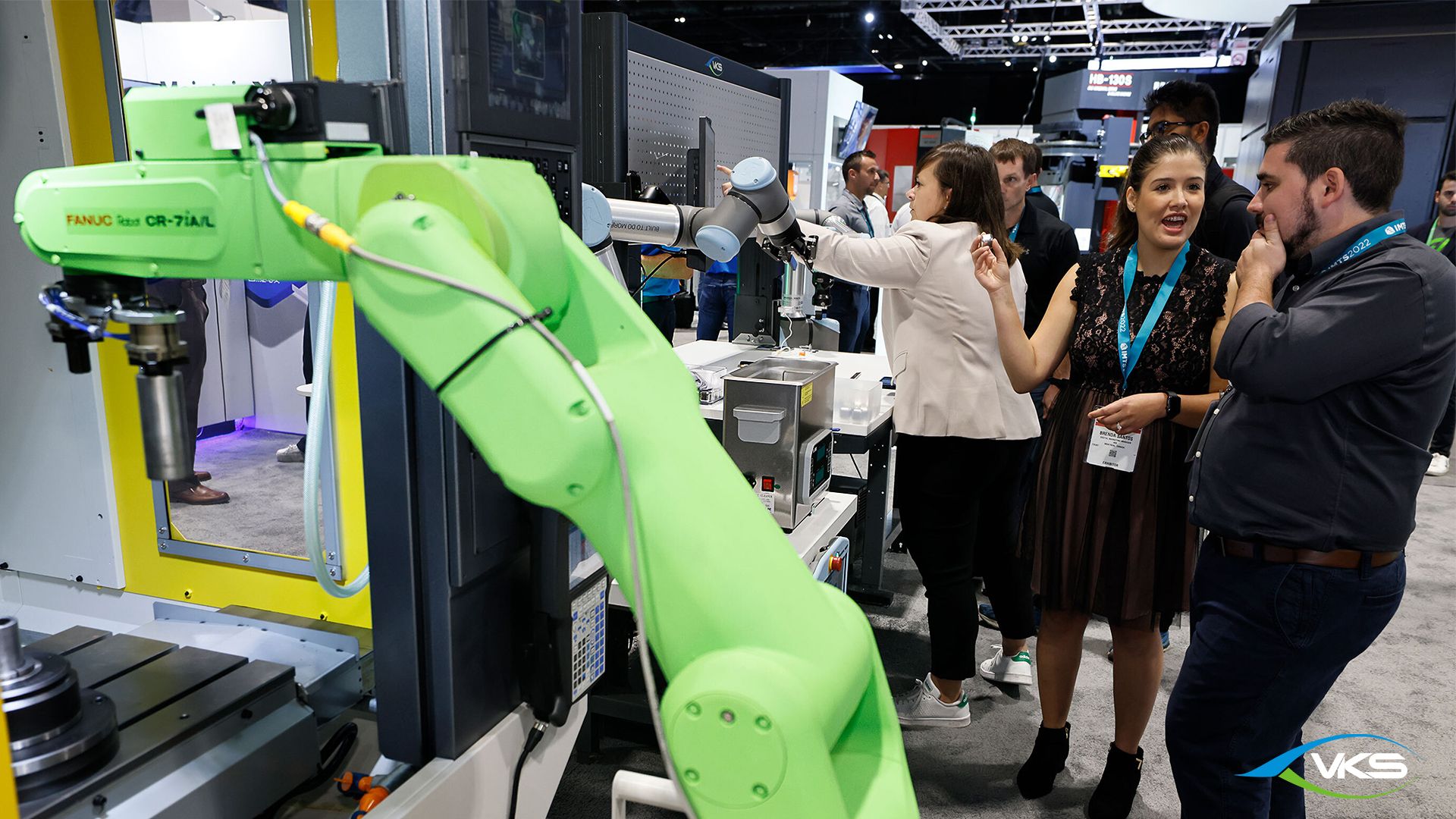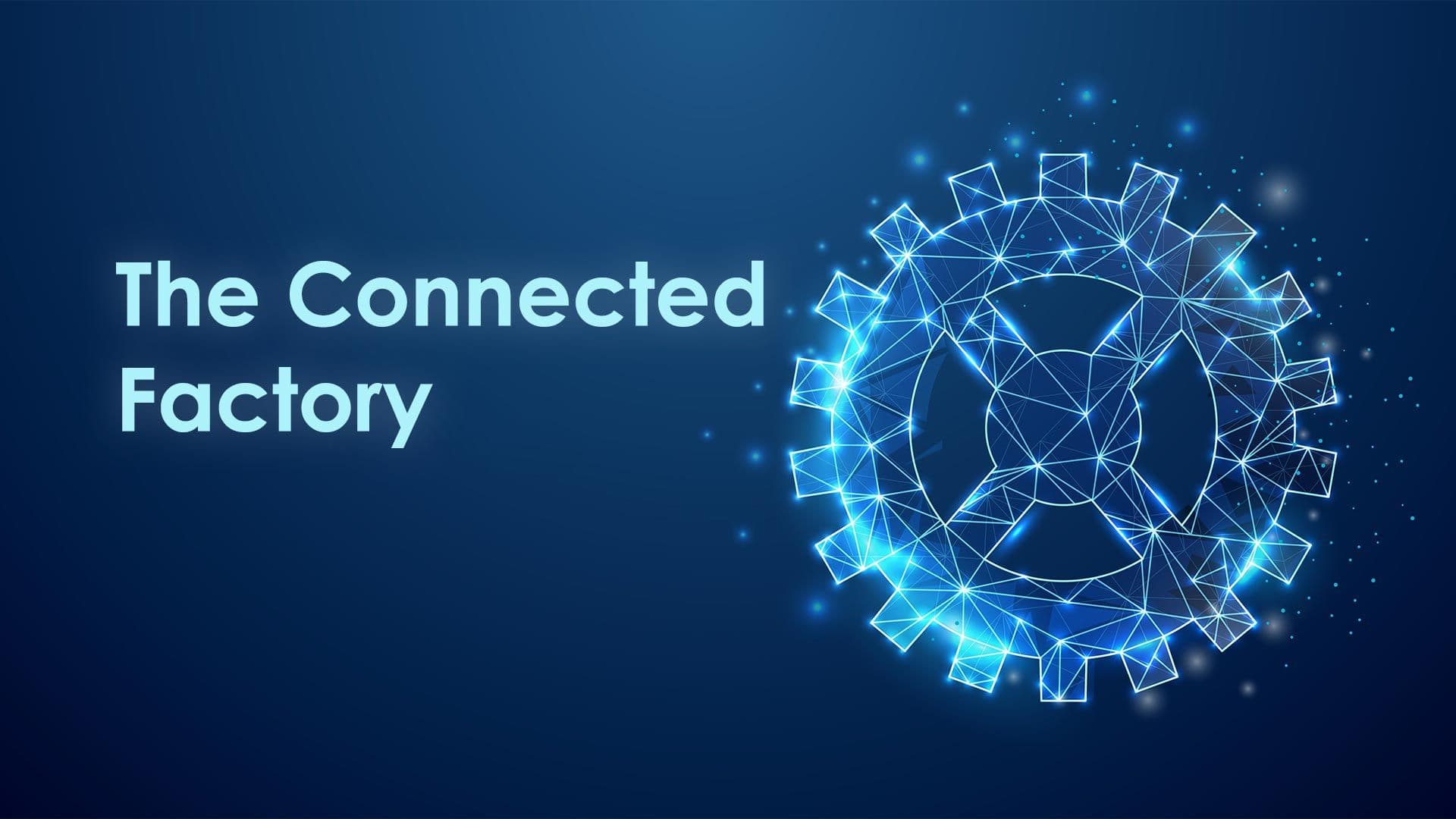The Connected Factory ushers in a new era of communication and coordination never thought possible within any manufacturing environment. Through Connected Factory technologies like digital work instructions, MES software, maintenance systems, and cyber-physical machines, companies now weave a centralized digital thread that actively shares information with all facets of the production line.
So what does a Connected Factory look like?
Just as no two operations are exactly alike, each Connected Factory will have some big differences from the next one, so there’s no set guide or blueprint on how to integrate this technology.
But that’s actually a good thing!
The Connected Factory is applicable for every operation as it is not limited to a set structure. Whether working in high-volume or high-mix environments, digital technology seamlessly connects your machines, people, and systems into a unique connected operation that allows you to grow with intelligence for the future.
VKS, Machine Metrics, MaintainX, Fulcrum, FANUC, and Universal Robots, long-time proponents of smart manufacturing, banded together to show people how the Connected Factory works in real life.
The Connected Factory Will Change the Industry
Over a decade ago, digital transformation technology took a major leap forward with Industry 4.0. Multiple intelligent systems were integrated into the manufacturing floor to assist workers and compile specific data. However, these systems did not reliably communicate with each other, meaning that your operation was uncoordinated and slow to respond. Quality control, warehousing, and assembly were often all disjointed silos in one larger process.
Companies could opt for “all in one” systems that could coordinate production, finance, maintenance, inventory, and process control but these systems were heavily optimized for one area while underperforming in another.
They facilitated the “jack of all trades” function without providing the best functions for any one thing.
Your production deserves to have the best tools — ones that are true masters of their field while facilitating and boosting the capabilities of the other systems and people within the factory.
Here is where the Connected Factory comes into play.
The 3 Goals of the Connected Factory
Through the use of APIs and IoT technology, companies are weaving strong digital threads throughout their operations. These digital threads create the Connected Factory where all systems, machines, tools, and people communicate and coordinate with each other.
The Connected Factory enables businesses to fulfill the 3 following goals.
1. Share Data in Real-Time
The Connected Factory enables all integrated manufacturing elements (systems, machines, and people) to transfer data and knowledge quickly and easily. This ability centralizes all data across the Connected Factory, making each integrated manufacturing element smarter, more efficient, and sustainable.
For example, as events occur on the production line, machines with built-in sensors can detect malfunctions before they affect product quality or harm the machine components. Maintenance becomes predictive instead of preventative. The systems then share the data through automated messages and maintenance work orders.
Likewise, the Connected Factory enables companies to set up digital checkpoints during product assembly. The different systems work together and verify that the proper procedures and specifications are followed by workers and machines.

2. Create a Self-Sustained and Self-Corrective Process
The information shared enables Connected Factories to be self-sustained and self-corrected. This capability empowers companies to take advantage of the best of both human and automated machine processes. Throughout the assembly process, industrial IoT devices capture precise data and share it through the API. This not only acts as a quality control check during assembly but also allows the process to correct itself and inherit greater sustainability with less required human interaction.
Connected Factory Technology is set up to monitor and carry out quality control at every stage of assembly. The product line immediately notifies workers and, if necessary, halts production if something does not fall within the defined production criteria.
The system can also take corrective measures such as issuing maintenance work orders or correcting production flow so as not to create bottlenecks or stalls in the system. With every system communicating harmoniously, the Connected Factory works as a well-trained team, aiding each system and making them stronger than they are on their own.
3. Empower Your People
Although the term “Connected Factory” brings to mind wireless and IoT connections between systems, tools, and machines, Connected Factory technology primarily exists to empower the people within the process and company.
Without this goal, the technology would be aimless.
Imagine the capabilities of automated processes, machines, and systems that enable people to perform what they do best. Connected Factory empowers each of the following positions in incredible ways.
- Supervisors & Managers: Leadership personnel gain a comprehensive understanding of their business processes, allowing them to make more informed judgments.
- Workers: With complete automated processes taking over the mundane aspects of their daily tasks, workers can provide uniquely human insight and perform actions that machines are incapable of doing.
- Engineers: With complete transparency of the ins and outs of every process, engineers can quickly solve problems and tailor their actions to the specific needs of the production line.
The Connected Factory Demonstration

So how can someone experience the Connected Factory in action?
VKS plus Machine Metrics, MaintainX, Fulcrum, FANUC, and Universal Robots hosted a live self-sustained demonstration of the Connected Factory in action. People watched and learned about a semi-autonomous manufacturing line that created an intelligent network of people, machines, and cyber systems.
It was the ultimate demonstration of Connected Factory technology.
In case you weren't able to attend, here is how the Connected Factory demonstration worked.
First, metal bars are automatically fed to a FANUC Robodrill. As the Robodrill receives the metal, it begins fabricating the desired components.
Then, a UR co-bot polishes and deburs the metal piece. Once this automated action is accomplished, it then hands the piece over to the second co-bot who will place the metal piece at an assembly station.
At this point, an assembly worker, using VKS work instructions, measure the piece with connected calipers that automatically record the SPC (Statistical Process Control) data within VKS. Once the operator and VKS have verified that the item is within specifications, the operator fastens the pieces together using the precise instructions on his screen and smart tools powered by VKS ToolConnect IoT.
The final step involves a cobot taking the now assembled metal piece and placing it in a container for shipping.

But wait, there’s more! Those are only the elements you can see. Within this whole process, Machine Metrics, MaintainX, Fulcrum, and VKS are performing key actions behind the scenes that make this process completely intelligent and automated.
Machine Metrics connects each of the machines and co-bots to track production performance in real time throughout the Connected Factory assembly line.
MaintainX directly combats machine downtime by quickly responding to the direct maintenance needs of the machines. As the components are fabricated and assembled, MaintainX gathers real-time information, identifies problems, and triggers maintenance tasks specific to the needs of the production line machines.
Fulcrum, the operation's ERP (Enterprise Resource Planning), also collects data on output, quality, and maintenance. Fulcrum provides BOMs, routing, and adaptive schedules to users within the Connected Factory.
VKS optimizes the human part of the in-process work by automatically advancing the production line as the worker completes their tasks. Every interaction communicated within the Connected Factory keeps the workflow moving efficiently. Additionally, VKS collects quality data (used to track statistical process control and quality control) and shares it with the MES for greater insight into productivity.
The Connected Factory Is at Your Fingertips

As much as we would have liked to see you at the demonstration, we know that not everyone could be there. But that shouldn’t stop you from experiencing the benefits of the Connected Factory.
Since digital processes and technology have zero limitations worldwide, the Connected Factory is always within reach for those willing to seize the opportunity!
All you need to do is book a demo with one of our dedicated team members. We’d be happy to show you how you can advance the capabilities of your manufacturing environment with Connected Factory technology.




